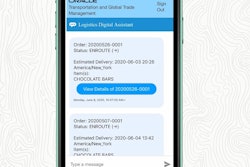
Digitalization is coming to all industries, and the logistics business is no exception. The Coronavirus disease (COVID-19) outbreak has been accelerating existing trends toward online shopping and quick shipping. Globally, more than one in three consumers either began or increased online shopping compared to before the COVID-19 outbreak. And, with the emergence of e-commerce giants, consumers are growing to expect same-day delivery. Even in the B2B world, 88% of companies say their customers request same-day delivery.
This all, quite obviously, is causing significant challenges to existing logistics flows. What will help companies meet these expectations is a more connected, efficient exchange of information that allows businesses to predict the demand for products, services and solutions before customers even make purchase decisions. This level of “pre-emptive logistics” is within reach and will be powered by 5G and Internet of Things (IoT) connectivity.
Silos, pre-digital operations hold back logistics
There are a number of significant barriers to pre-emptive logistics and reliable quick deliveries. Siloed operations and a substantial lack of transparency across the supply chain prevents the exchange of good information, often even within the same company. There is also a dearth of good digital track-and-trace tools. In fact, 34% of decision makers surveyed in an Ericsson IndustryLab report say that a lack of easy exchange of information with customers and suppliers is a major obstacle for improving their companies’ logistics operations today.
Integration of these systems would be a very cumbersome data mapping activity. Not only do logistics managers have to track things like trucks and planes, they wrestle with the “nested objects” problem – to track a particular item of product, one needs to know the container it’s in, the pallet that container is on, and what vehicle the container is in. It’s a lot of data to crunch, and as a consequence it’s difficult for businesses to achieve the kind of holistic transparency they need to break into predictive logistics. “Where’s my truck?” is a common daily question.
This kind of tracking is difficult but possible – what’s always held the industry back is a lack of connectivity. Some aspects of the required information flow aren’t even digitized at all but managed with paper and pen, and even where digitization is happening, it’s often older technology like VHF radio. Forty percent of decision makers say that a lack of good digital tools and reliable mobile connectivity keep them from improving their companies’ logistics operations, and three in five say better tools would improve their organizations’ ability to deliver on time. The COVID-19 pandemic has shown that logistics companies can no longer wait to create a more transparent and efficient supply chain to stay ahead of unexpected shifts in demand and consumption habits.
Connectivity is key
Fixing the connectivity issue is the first step in enabling greater efficiency among the supply chain, and eventually “pre-emptive logistics.” 5G and the IoT can help logistics companies develop solutions. This includes giving suppliers the ability to predict the demand for products and services before customers make purchase decisions, meaning that shipments of goods can be started proactively.
So, what does a network empowering “pre-emptive logistics” look like? Cellular wireless networks will deliver the wide-area coverage necessary to provide a true end-to-end solution, particularly when enhanced by the speed, low latency and reliability of 5G. This will enable logistics companies to integrate and coordinate devices so that data can flow throughout the supply chain.
IoT technologies like NB-IoT or Cat-M, or even shorter-range tech like Bluetooth, can provide cost- and energy-efficient communications between the sensor network across facilities, vehicles and devices. QR, barcode and RIFD scanners, as well as video recognition, will help companies track movements, automating work that is today typically done manually.
Better transparency will also be key, and that means breaking down the silos for better information sharing between parties so that the location and status of shipments can be viewed by all, at all times. Digitizing those operations currently done with paper or older tech would allow organizations to plan more efficiently and deliver far better customer experiences throughout the value chain. Sixty-eight percent of the decision makers in the study say it will be very important for their companies to be part of such information sharing systems in the next three to five years.
Pre-emptive logistics is the end goal
Pre-emptive logistics won’t happen overnight. But, if the logistics industry follows the steps, from digitization and better connection, to better transparency through sharing data and better efficiency through optimization, it can get to a place where the demand for products, services and solutions can be predicted before consumers even make their purchases.
That means shipments of goods can be started proactively, which will have a ripple effect throughout the supply chain. The improved planning time enables a more efficient and sustainable choice of transportation, such as using low-peak traffic periods and optimally filled transports.
Beyond the actual deliveries themselves, a pre-emptive approach to logistics will involve things like on-demand warehousing, where a more flexible supply chain is capable of handling large shifts in global consumption habits (a great recent example of this is the recent demand for sanitizer and face masks at the onset of the COVID-19 pandemic).
It all starts with better connectivity. That’s the first step in bringing the logistics industry forward into the future. And a more connected, transparent and efficient supply chain is within reach.

















![Pros To Know 2026 [color]](https://img.sdcexec.com/mindful/acbm/workspaces/default/uploads/2025/08/prostoknow-2026-color.mduFvhpgMk.png?ar=16%3A9&auto=format%2Ccompress&bg=fff&fill-color=fff&fit=fill&h=135&q=70&w=240)

